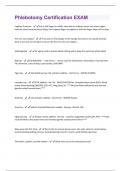ARTICLES
TOPIC
ALWAYS
CONNECTED
2017
WEEK
2
Rasmussen
et
al.
(2016)
Relation
between
active
mediation,
exposure
to
Daniel
Tiger’s
Neighborhood,
and
US
preschoolers’
social
and
emotional
development
An
extensive
amount
of
research
has
identified
factors
that
influence
children’s
social
and
emotional
development.
Relatively
little
research,
however,
has
examined
the
role
of
active
mediation
–
parent–child
conversations
specifically
about
media
and
media
content
–
on
children’s
social
and
emotional
development.
Therefore,
the
first
purpose
of
this
study
is
to
explore
the
relation
between
two
types
of
active
mediation
and
preschoolers’
social
and
emotional
development.
Television
exposure
is
another
potentially
important
factor
in
children’s
social
and
emotional
development.
Daniel
Tiger’s
Neighborhood,
employs
a
social–emotional
curriculum
similar
to
its
predecessor,
but
does
so
with
animated
characters
and
formal
programming
features
designed
to
help
children
learn
specific
social
and
emotional
skills.
Preschoolers’
social
and
emotional
development
Children’s
social
development
refers
to
“children’s
ability
to
interact
with
others
and
their
capacity
for
self-‐
regulation,”
and
emotional
development
refers
to
children’s
“perceptions
of
themselves,
their
abilities
to
understand
the
feelings
of
other
people,
and
their
ability
to
interpret
and
express
their
own
feelings”.
Together,
social
and
emotional
development
plays
a
critical
role
in
influencing
children’s
academic
performance
and
lifelong
learning.
A
few
key
aspects
of
social
and
emotional
development
necessary
for
success
in
school
include
children’s
ability
to
understand
the
feelings
of
others,
their
perceptions
of
themselves,
and
their
ability
to
recognize
emotions:
• Empathy
=
an
affective
response
to
another
person’s
situation,
a
cognitive
awareness
of
another
person’s
state,
and
the
development
of
perspective
taking
skills
• Self-‐efficacy
=
The
belief
that
one
can
accomplish
an
activity,
or
not,
is
a
key
factor
in
whether
or
not
one
will
undertake
the
activity
• Emotion
recognition
=
The
ability
to
discern
and
recognize
others’
emotions
is
related
to
a
variety
of
outcomes
important
for
a
successful
transition
into
the
classroom
and
in
developing
social
relationships
Active
mediation
and
children’s
social
and
emotional
development
Active
mediation
can
alter
children’s
reactions
to
television
exposure,
and
seems
to
be
especially
effective
at
helping
facilitate
young
children’s
adoption
of
prosocial
attitudes
and
learning
from
media
messages
because
it
can
help
direct
children’s
attention
to
critical
parts
of
the
media
message,
understand
plots
and
messages,
and
and
to
distinguish
between
fiction
and
reality.
Experimental
manipulations
of
mediation
(“manipulated
active
mediation”),
on
the
other
hand,
generally
follow
recommendation
to
explore
the
relative
effectiveness
of
different
content
contained
in
manipulated
mediation
messages.
Such
experimental
manipulations
of
mediation
can
produce
positive,
prosocial
outcomes.
Some
argue,
however,
that
experimental
manipulations
of
mediation
“cannot
test
claims
of
long-‐term
effects”,
likely
due
to
the
artificiality
of
experimental
settings
and
manipulations,
and
to
a
shortage
of
follow-‐up
studies,
that
tend
to
plague
media
effects
experimental
research.
Prosocial
television
and
children’s
social
and
emotional
development
Exposure
to
mass
media
is
another
factor
that
may
contribute
to
young
children’s
social
and
emotional
development.
Exposure
to
children’s
educational
television
programming
is
consistently
related
to
positive
educational
outcomes,
such
as
content
recall
and
comprehension
problem-‐solving
and
flexible-‐thinking
skills
and
early
literacy
skills.
Children
should
be
expected
to
learn
social
and
emotional
skills
from
prosocial
television
programming
for
two
main
reasons:
• First,
according
to
social
cognitive
theory,
behavior
is
learned
socially,
observationally,
or
vicariously
through
others.
1
, • Second,
children
can
learn
from
prosocial
programming
that
is
entertaining,
especially
when
the
lesson
is
incorporated
into
the
narrative
being
portrayed
because
the
same
cognitive
resources
are
being
used
to
process
both
the
lesson
and
the
narrative
simultaneously.
Method
Participants
were
127
children
aged
2–6.
Two
different
DVDs
were
used
in
the
study.
The
first
DVD
contained
10
separate
30-‐minute
episodes
of
Daniel
Tiger’s
Neighborhood,
and
the
second
DVD
contained
the
first
30
minutes
of
10
episodes
of
Pure
Nature,
a
nature-‐themed
documentary
program.
This
first
questionnaire
asked
parents
about
demographics,
their
child’s
past
exposure
to
Daniel
Tiger’s
Neighborhood,
the
number
of
media
devices
in
their
home,
and
the
frequency
of
parental
provision
of
household
active
mediation
of
educational
television
(measures
are
described
below).
Active
mediation
was
also
experimentally
manipulated
in
order
to
explore
the
research
question.
Results
&
discussion
The
study
found
that
household
active
mediation
was
associated
with
pre-‐schoolers’
empathy.
The
study
also
found
that
watching
Daniel
Tiger’s
Neighborhood
was
associated
with
higher
levels
of
empathy,
but
only
for
preschoolers
who
receive
frequent
household
active
mediation.
Likewise,
active
mediation
facilitated
children’s
recognition
of
letters
and
numbers
presented
in
Sesame
Street.
These
findings
also
suggest
a
need
for
future
research
exploring
the
influence
of
coviewing,
or
joint
media
engagement,
on
children’s
social
and
emotional
development.
Active
mediation
often
occurs
while
parents
and
children
are
jointly
engaged
with
the
television
program.
Many
parents
report
participating
in
coviewing
with
their
child
on
a
regular
basis.
Such
coviewing
is
associated
with
more
television
exposure
and
tends
to
occur
in
homes
where
parents
have
positive
attitudes
about
television
content.
Although
coviewing
refers
to
the
mere
act
of
parents
consuming
media
with
their
children,
research
continues
to
refer
to
coviewing
even
when
it
is
accompanied
by
parent–
child
conversations
about
media
content.
In
addition,
the
relation
between
exposure
to
Daniel
Tiger’s
Neighborhood
and
both
empathy
and
emotion
recognition
depended
on
preschoolers’
age.
Younger
preschoolers
(ages
4
and
younger)
who
frequently
receive
household
active
mediation
benefited
more
from
exposure
to
Daniel
Tiger’s
Neighborhood
than
older
preschoolers.
Results
suggest
that
family
income
also
played
a
role
in
children’s
responses
to
Daniel
Tiger’s
Neighborhood.
The
study
found
that
exposure
to
the
show
was
associated
with
higher
levels
of
self-‐efficacy
for
low-‐income
children
who
frequently
receive
household
active
mediation.
This
may
be
the
case
because
the
show
provided
messages
and
learning
experiences
that
children
from
these
homes
may
not
be
otherwise
receiving.
Troseth
et
al.
(2016)
What’s
next
for
research
on
young
children’s
interactive
media?
Recent
research
shows
the
value
of
active
parental
co-‐viewing
in
promoting
learning
from
video
even
into
the
preschool
period.
Moving
forward,
researchers
can
offer
empirically
based
answers
to
policy-‐makers,
con-‐
tent
creators,
and
practitioners
to
increase
the
likelihood
that
new
digital
technologies
support
children’s
development.
Examining
social
interaction
Regarding
effective
co-‐viewing
of
media
(or
active
mediation),
research
has
begun
to
examine
three
mechanisms
by
which
social
interaction
supports
children’s
learning:
1. Adults
provide
a
scaffold
to
keep
children
focused,
pointing
and
talking
to
direct
attention
to
important
screen-‐based
content.
2. Cognitive
support
is
direct
instruction
adults
provide
during
co-‐viewing.
By
asking
questions
about
on-‐
screen
content
or
relating
it
to
prior
events,
adults
encourage
children
to
retrieve
from
memory
and
rehearse
information.
3. Adults’
social
feedback
cues
(e.g.,
gaze
direction,
use
of
child-‐directed
speech,
contingent
responsiveness
to
children’s
actions)
highlight
learning
opportunities.
These
natural
adult
behaviors
indicate
to
children
that
the
adult
has
information
to
share
with
them,
making
learning
more
efficient.
New
research
indicates
that
there
is
an
optimal
amount
of
interaction
that
supports
children’s
learning;
too
much
can
be
distracting.
Future
research
should
develop
measurable
criteria
to
evaluate
program
features
that
would
encourage
viewers’
interaction
with
the
screen.
2
, Although
much
more
research
is
needed,
the
wide
availability
of
this
new
technology
also
holds
promise
for
children
who
lack
access
to
regular
in-‐person
co-‐reading
time.
As
the
price
of
tablet
computers
continues
to
decrease
and
educational
content
increases,
it
becomes
more
realistic
to
think
of
distributing
tablets
to
low-‐
SES
children
in
need
of
extra
support.
New
technology
thus
may
allow
a
skilled
co-‐reader/
viewer/player
to
support
children’s
learning
from
a
distance.
Interactive
innovations:
physical
(and
social?)
interaction
from
a
screen
Touch
screens
and
motion
capture
offer
new
interactive
features
for
children
to
explore
on
their
own.
An
obvious
advantage
is
the
need
for
engagement:
children’s
responses
to
prompts
are
required
for
progress
of
the
game
or
story,
offering
true
“cause
and
effect.”
Moreover,
touchscreen
technology
has
the
potential
to
be
adaptive,
uniquely
responding
to
children’s
responses.
Traditional
screen
media
have
not
provided
the
social
cues
a
real
person
can
offer,
such
as
contingent
eye
gaze,
responsiveness
to
the
viewer,
or
incorporating
personal
details
(e.g.,
the
viewer’s
name).
In
contrast,
modern
touchscreen
devices
can
offer
the
contingency
and
responsiveness
of
a
skilled
adult
scaffolder
in
a
way
that
supports
children’s
learning.
Research
to
date
suggests
that
for
young
children,
interactive
technology
holds
promise
of
better
learning
compared
to
passively
watching
video.
However,
built-‐in
contingency
does
not
entirely
eliminate
the
need
for
parental
supervision.
Parent
support
may
be
needed
to
help
young
children
understand
device
mechanics
and
the
rules
of
the
game,
to
avoid
frustration
and
ensure
the
intended
benefits.
Social
support
from
a
real
person
promotes
children’s
learning
from
interactive
media.
Future
research
should
determine
if
this
parental
support
also
enhances
socio-‐
emotional
development.
It
is
also
important
to
consider
how
individual
differences
in
children’s
interaction
with
various
technological
features
might
impact
their
use
of
a
product.
Some
express
concern
that
getting
a
response
from
a
device
triggers
brain
reward
path-‐
ways,
making
interactive
devices
potentially
addictive.
Given
parent
concerns
and
policy
implications,
neuroscience
research
with
children
engaged
with
interactive
technology
is
vital.
Additionally,
home-‐
based
observations
and
surveys
are
needed
to
understand
how
new
interactive
technology
affects
children’s
play
and
family
life.
WEEK
3
Van
der
Schuur
et
al.
(2015)
The
consequences
of
media
multitasking
for
youth:
a
review.
Media
multitasking
is
typically
defined
as
either
simultaneously
engaging
in
two
or
more
types
of
media
or
using
media
while
engaging
in
non-‐media
activities,
such
as
text
messaging
while
studying.
The
increase
in
media
multitasking
has
raised
concerns
regarding
its
potential
negative
consequences
for
youth.
To
date,
research
on
media
multitasking
among
youth
has
focused
on
three
domains
of
youths’
functioning:
1) youths’
cognitive
control
abilities
(e.g.,
the
ability
to
sustain
attention
and
efficiently
switch
between
tasks);
1. (2)
their
academic
performance
(e.g.,
perceived
academic
learning
and
course
grades);
and,
more
recently,
2. (3)
their
socioemotional
functioning
(e.g.,
depression
and
social
anxiety).
The
main
assumption
of
the
existing
studies
is
that
when
youth
frequently
engage
in
media
multitasking,
they
become
accustomed
to
constant
switching
between
activities
and
eventually
lose
their
ability
to
focus
on
a
single
activity.
Media
multitasking
may
therefore
result
in
deficits
in
the
control
processes
that
regulate
thoughts
and
actions,
also
referred
to
as
cognitive
control
abilities.
At
least
two
types
of
media
multitasking
can
be
distinguished:
• using
multiple
media
simultaneously
and
• using
media
while
engaging
in
a
non-‐media
activity
Method
We
systematically
searched
for
peer-‐reviewed
quantitative
empirical
studies
that
were
published
prior
to
July
2014
using
an
electronic
automated
search
strategy.
Studies
were
included
in
this
review
if
they
(1)
examined
the
simultaneous
use
of
multiple
media,
media
use
while
engaging
in
a
non-‐media
activity,
or
both
types
of
media
multitasking;
(2)
investigated
at
least
one
of
the
three
domains
of
youths’
functioning
(cognitive
control,
3












